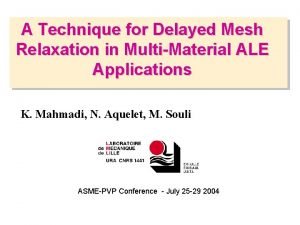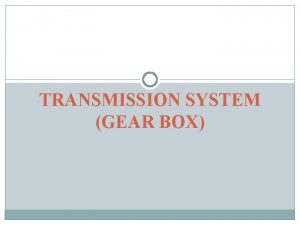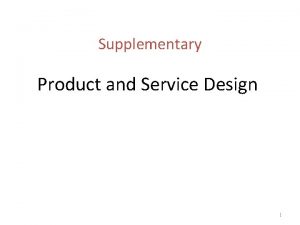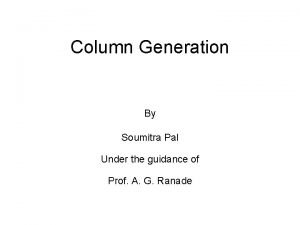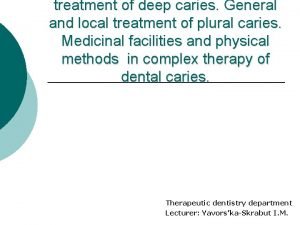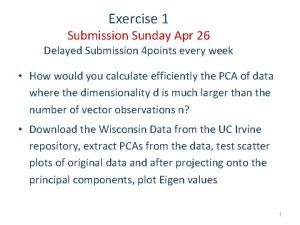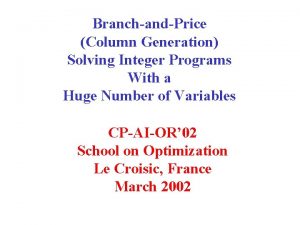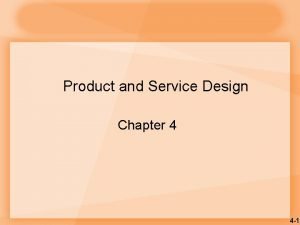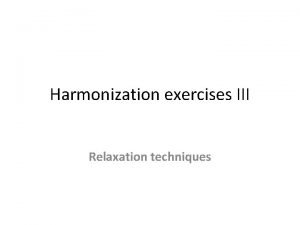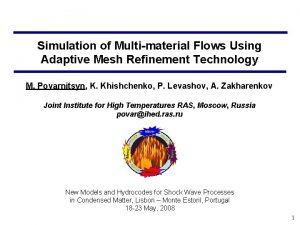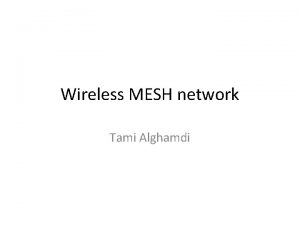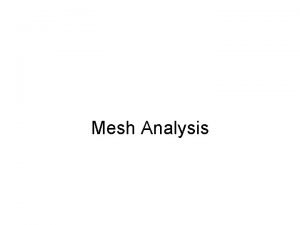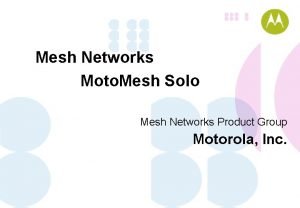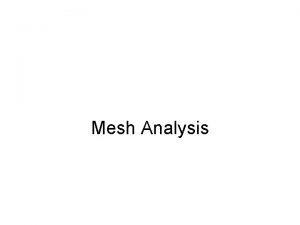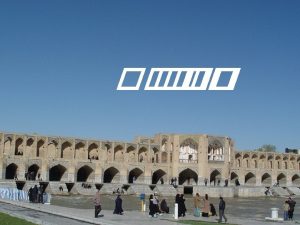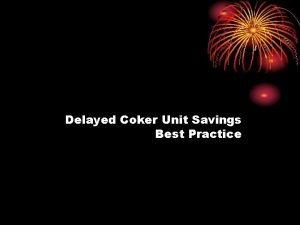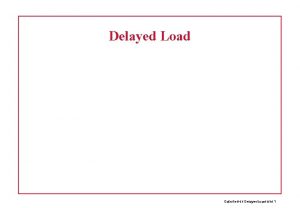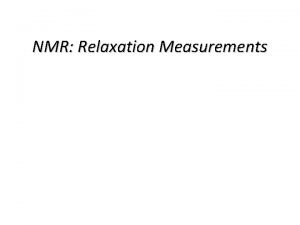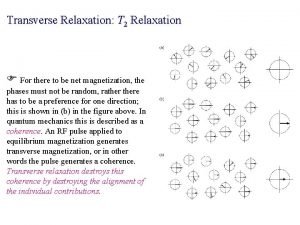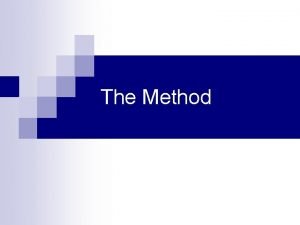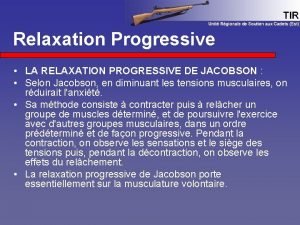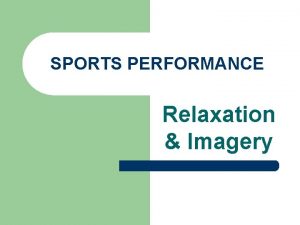A Technique for Delayed Mesh Relaxation in MultiMaterial





















- Slides: 21

A Technique for Delayed Mesh Relaxation in Multi-Material ALE Applications K. Mahmadi, N. Aquelet, M. Souli ASME-PVP Conference - July 25 -29 2004

The Challenges Ø To apply a delayed mesh relaxation method to arbitrary Lagrangian Eulerian multi-material formulation to treat fast problems involving overpressure propagation such as detonations. Ø To define relaxation delay parameter for general applications of high pressures, because this parameter is a coefficient dependent.

The Process • Introduction • Eulerian and ALE multi-material methods • Multi-material interface tracking – VOF method • Delayed mesh relaxation technique – Lagrangian phase – Mesh relaxation phase • Numerical applications – Three-dimensional C-4 high explosive air blast with reflection • Conclusions

Introduction A problem of blast propagation Ø Lagrangian Formulation Advantages ü The computational domain follows the fluid particle motion, which greatly simplifies the governing equations. üLagrangian schemes have proven very accurate as long as the mesh remains regular. Drawbacks ü The material may undergo large deformations that lead to severe mesh distortions and thereby accuracy losses and a reduction of the critical time step.

Introduction Ø Multi-Material Eulerian Formulation Advantages ü The mesh is fixed in space and the material passes through the element grid. The Eulerian formulation preserves the mesh regularity. Drawbacks ü The computational cost per cycle and the dissipation errors generated when treating the advective terms in the governing equations.

Introduction Ø Arbitrary Lagrangian Eulerian (ALE) Formulation Advantages ü The principle of an ALE code is based on the independence of the finite element mesh movement with respect to the material motion. The freedom of moving the mesh offered by the ALE formulation enables a combination of advantages of Lagrangian and Eulerian methods. Drawbacks ü For transient problems involving high pressures, the ALE method will not allow to maintain a fine mesh in the vicinity of the shock wave for accurate solution.

Introduction Ø Delayed mesh Relaxation in ALE method ü The method aims at an as "Lagrange like" behavior as possible in the vicinity of shock fronts, while at the same time keeping the mesh distortions on an acceptable level. ü The method does not require to solve the equation systems and it is well suited for explicit time integration schemes. ü The relaxation delay parameter must be defined for general applications of high pressures.

Introduction Ø ALE approach Equilibrium equations ü Conservation of mass ü Conservation of momentum ü Conservation of energy v: Fluid particle velocity, u: Mesh velocity Ø Eulerian approach u=0 Ø Lagrangian approach u=v

Eulerian and ALE Multi-Material Method Ø Operator split 2 phases of calculations Step n First step: Lagrangian phase Lagrangian Second step: Remap phase Eulerian Transport equation ALE Step n+1

Multi-Material interface tracking VOF In the Young technique, Volume fractions of either material for the cell and its eight surrounding cells are used to determine the slope of the interface.

Delayed mesh relaxation technique Lagrangian phase • Acceleration • Material velocity where Mesh relaxation phase • Node coordinate after relaxation is a node coordinate provided by a mesh relaxation algorithm, operating on the Lagrangian configuration at tn+1. is a relaxation delay parameter. • Lagrangian node coordinate • Reference system velocity

Numerical applications • Three dimensional C-4 high explosive air blast Jones Wilkins Lee equation of state A (Mbar) B (Mbar) R 1 R 2 E 0 (Mbar) 5. 98155 0. 13750 4. 5 1. 5 0. 32 0. 087 C-4 high explosive JWL parameters

Numerical applications • Three dimensional C-4 high explosive air blast Modeling zoom

Numerical applications • Three dimensional C-4 high explosive air blast with reflection Modeling zoom

Numerical applications • Three dimensional C-4 high explosive air blast Pressure propagation

Numerical applications • Three dimensional C-4 high explosive air blast with reflection Pressure propagation

Numerical applications • Three dimensional C-4 high explosive air blast Pressure plot at 5 feet

Numerical applications • Three dimensional C-4 high explosive air blast with reflection Pressure plot at 5 feet

Numerical applications • Three dimensional C-4 high explosive air blast With 28296 elements With 18864 elements Experimental overpressure = 3. 40 bar t 0=1, 58. 10 -2 µs Overpressure according to relaxation parameter

Numerical applications • Three dimensional C-4 high explosive air blast with reflection Experimental Overpresure=2. 2 bar t 0=2, 1. 10 -2 µs Overpressure according to relaxation parameter

Conclusions Ø Delaying the mesh relaxation makes the description of motion more "Lagrange like", contracting the mesh in the vicinity of the shock front. Ø This is beneficial for the numerical accuracy, in that dissipation and dispersion errors are reduced. Ø In this study, the definition of the relaxation delay parameter has improved for general applications of shock wave: 0. 001µs-1 0. 1 µs-1. Ø Comparing numerical results using delayed mesh relaxation in ALE method to Lagrangian, Eulerian and classical ALE methods shows that this method is the best for problems involving high pressures.
 Mesh relaxation
Mesh relaxation Constant mesh gear box
Constant mesh gear box Relaxation response technique
Relaxation response technique Relaxation response technique
Relaxation response technique Relaxation response technique
Relaxation response technique Causes of delayed bone age
Causes of delayed bone age Supplementary design
Supplementary design On entering a glass prism, sun‘s rays are
On entering a glass prism, sun‘s rays are Delayed column generation
Delayed column generation Hypergonadotropic hypogonadism
Hypergonadotropic hypogonadism Indication of amalgam
Indication of amalgam Hygiene hypothesis
Hygiene hypothesis What does product and service design do
What does product and service design do Dads
Dads Delayed submission
Delayed submission What are the complications of blood transfusion
What are the complications of blood transfusion The great gatsby summary chapter 3
The great gatsby summary chapter 3 Delayed column generation
Delayed column generation Delayed type hypersensitivity reactions
Delayed type hypersensitivity reactions Delayed differentiation and modular design
Delayed differentiation and modular design Baseline
Baseline Anecdotal leads
Anecdotal leads
